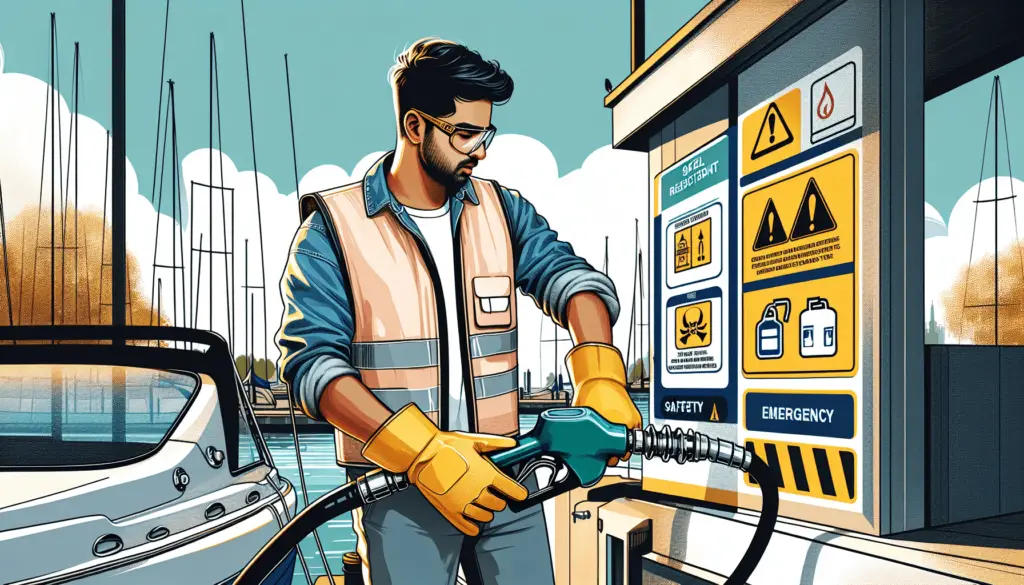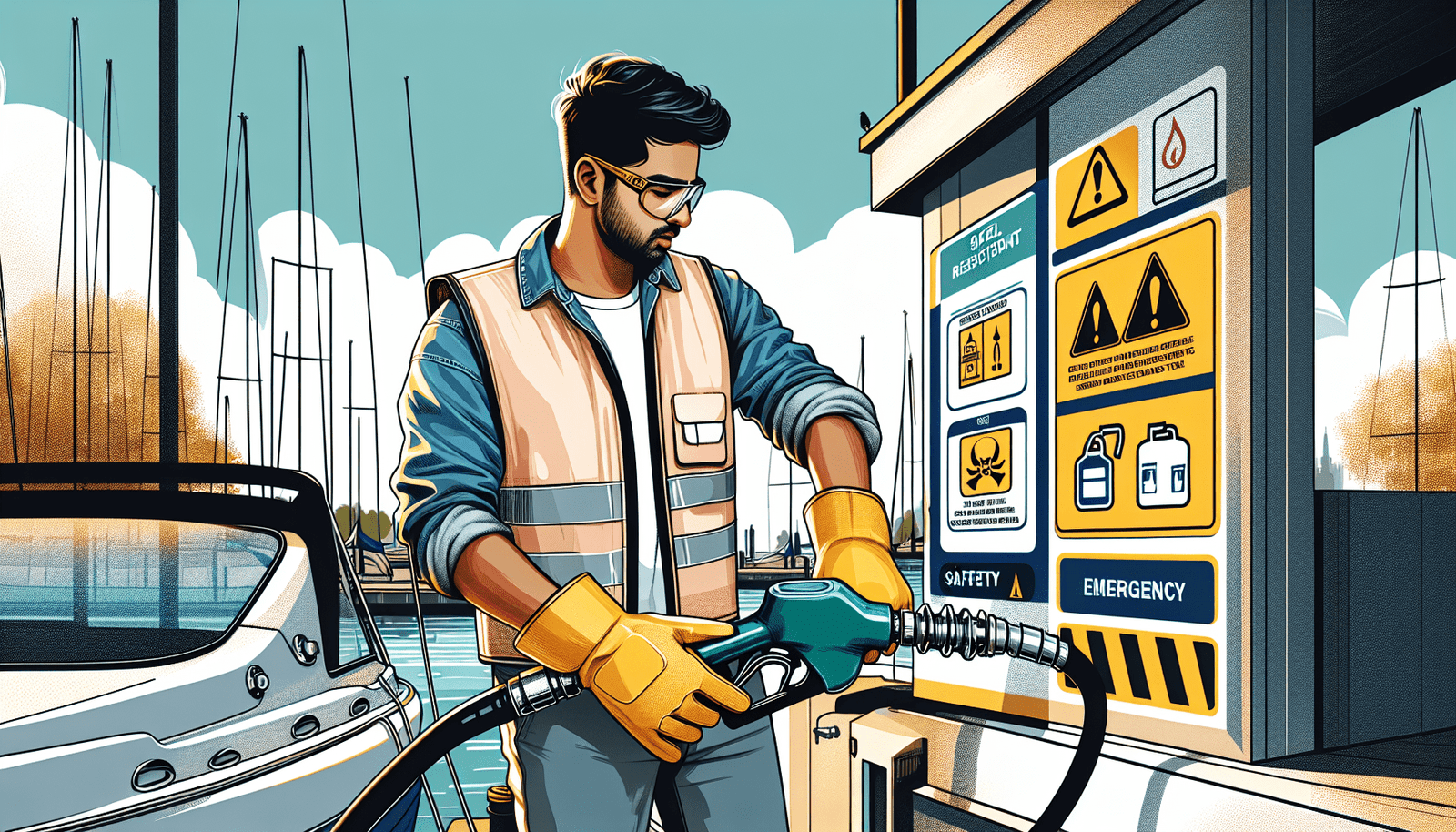Imagine yourself poised on the threshold of a new maritime adventure. Your boat’s flat decks gleam in the sunlight, teeming with the scent of adventure and freedom. However, as the heart of your vessel, the engine, runs on fuel, proper safety precautions are crucial. “Boating Safety Precautions for Fueling Your Boat” gently guides your hands through the labyrinth of safety ropes, showing you how to fuel your boat without risking leaks, explosions, or environmental hazards. So tighten your life jacket and fix your gaze on the horizon, because it’s time to ensure your boat’s thirst is quenched in the safest possible manner.
Understanding the Basics of Boat Fuelling
The allure of the open seas tempts many of us away from dry land. To enjoy such adventurous ventures, it’s paramount that you comprehend some rudimentary knowledge about boat fuelling.
Types of boat fuels
The two distinct types of boat fuel are gasoline and diesel. Your choice here should depend on the engine’s requirements. Gasoline, like in cars, is most commonly utilized for outboard engines, whilst diesel serves inboard engines, typically for larger, more robust vessels.
Important components of a boat’s fuel system
Your boat’s fuel system is a complex network intricate in design yet fundamental in function. Consisting of the fuel tank, pump, filter, injector, and lines that contribute to a well-orchestrated ballet of exploding fuel and air, propelling you forward.
Potential dangers of improper boat fuelling
Mismanagement of boat fuel does not only carry threat to your pocket; it poses a danger to your vessel and the environment. Overfilling fuel can access the ventilation system resulting in noxious gases release, and the spilt fuel, damaging both the sea and your hard-earned boat.
Maintaining Boat’s Fuel System
Given the vital role of the fuel system, it requires a disciplined routine of care and maintenance.
Regular inspection
Regular check-ups give you a clear insight into your fuel system’s performance and condition. Inspect for leaks, damages, rusts, or other warning signs that can balloon into something cumbersome.
Changing fuel filters
Your fuel filter bears the burden of trapping unwanted particles. Replace these filters regularly, establishing a safeguard against contaminating your fuel system.
Cleaning fuel injectors
As time progresses, fuel injectors may face a build-up of dirt and contaminants. Regular cleansing of these silent heroes ensures efficient fuel combustion and staves off performance loss.
Checking and replacing fuel hoses
Detoriated fuel hoses not only cause leaks but are also dangerous fire hazards. Check for cracks, damages, and incorporate routine replacements into your maintenance plan.

Choosing the Right Fuel
Equipping your vessel with the right fuel is glorious alchemy.
Benefits of using the correct type of fuel
Ensuring the correct fuel type, adhering to your engine’s specifications, guarantees optimum performance, elongates your engine’s life, and secures your safe return to shore.
Dangers of using incorrect fuel
Contrariwise, using incorrect or poorly formulated fuel will scar your engine’s performance and lifespan, potentially marooning you amidst the incandescent lap of the unforgiving sea.
Understanding octane ratings
The octane rating plays a significant role in attaining the ideal fuel. Higher octane fuels combust at higher temperatures and provide smooth functioning. Always meet or exceed your engine’s recommended octane rating.
Proper Boat Fuelling Techniques
Perfecting the science of fuelling deals with perfecting the technique.
Correct bowser positioning
Positioning the bowser correctly ensures higher efficiency and mitigates spillages when fuelling.
How to hold the fuel nozzle
Holding the nozzle horizontally can avoid splash back and reduce fuel loss. Ensuring it fits well and securely inside the filler neck minimizes both spills and fume emissions.
Monitoring the fuel level
Keeping an eye on the fuel level prevents overfilling which might cause fuel spills or reach the boat’s vent system.
Avoiding overfilling
This is an art. Overfilling could inundate the boat’s vent system with fuel, setting a precarious stage for fire hazards.
Safe reinstallation of the fuel cap
A safely reinstalled cap prevents fuel contamination and ensures no accidental spills occur.

Fire Safety During Fuelling
Being prepared to combat fire emergencies is a crucial part of boat refuelling.
Preventing static electricity
Touching the metal body of the boat before fuelling can ground any static electricity that could act as an ignition source.
Avoiding open flames
Avoiding open flames, smoking during fuelling, mitigates risk of accidental ignitions.
Usage of fire extinguishers
Equipping your boat with fire extinguishers, familiarizing yourself with their operation provides a critical firewall against fire emergencies.
Proper Ventilation After Fuelling
Ventilation is a key player in the safety of boat fuelling.
Why proper ventilation is crucial
This allows for any built-up noxious fumes in the bilge or engine compartments to disperse.
How to ventilate your boat
Opening hatches and using powered ventilation systems if fitted before starting the engine facilitate proper air circulation.
Knowing when your boat is properly ventilated
Once no scent of fuel remains, and carbon monoxide detectors, if installed, indicate a safe, level.
Fuel Spill Response
Knowing the response actions when there’s a spillage can save the day.
Steps to take in case of a fuel spill
Stop the source of the spill, contain it with absorbent material, and notify the competent authorities right away.
Proper disposal of absorbant materials
These should be placed in a proper, sealable disposal bag and disposed of responsibly, meeting the local regulations.
Emergency Response
Being prepared for adverse situations is paramount in sea adventures.
What to do in case of fires
Use your fire extinguisher to put out the fire, evacuate if necessary, and call your local maritime rescue center.
How to handle fuel leaks
Stop the source, ventilate the area, seal any leak points, and get professional help if the situation seems critical.
Emergency contacts.
Have your local coastguard, maritime rescue, and pollution control contacts handy.
Preventing Fuel Theft
The sea is full of surprises, including undesirable ones. Protect your fuel with-
Usage of lockable fuel caps
This simple yet effective tool just might negate the risk of fuel thefts.
Effective storage of fuel
Store extra fuel in a secure and temperate place, discouraging prying eyes and hands.
Fuel Efficiency Tips
Nothing beats the harmony between seafaring and efficiency.
Maintaining optimal boat weight
An overloaded boat drags and requires more fuel. Maintain an optimal weight for increased fuel efficiency.
Regular engine maintenance
Regular maintenance ensures smooth function, saving fuel in the process.
Effective route planning
An efficient route consumes less fuel, without the need for excessive speed or weaving.
Sailing is an exhilarating, yet intricate affair. Armed with this knowledge, you can set sail, fetching a seamless seafaring experience. Always remember that boat safety is as indispensable as the boat freedom it allows us to seek.

